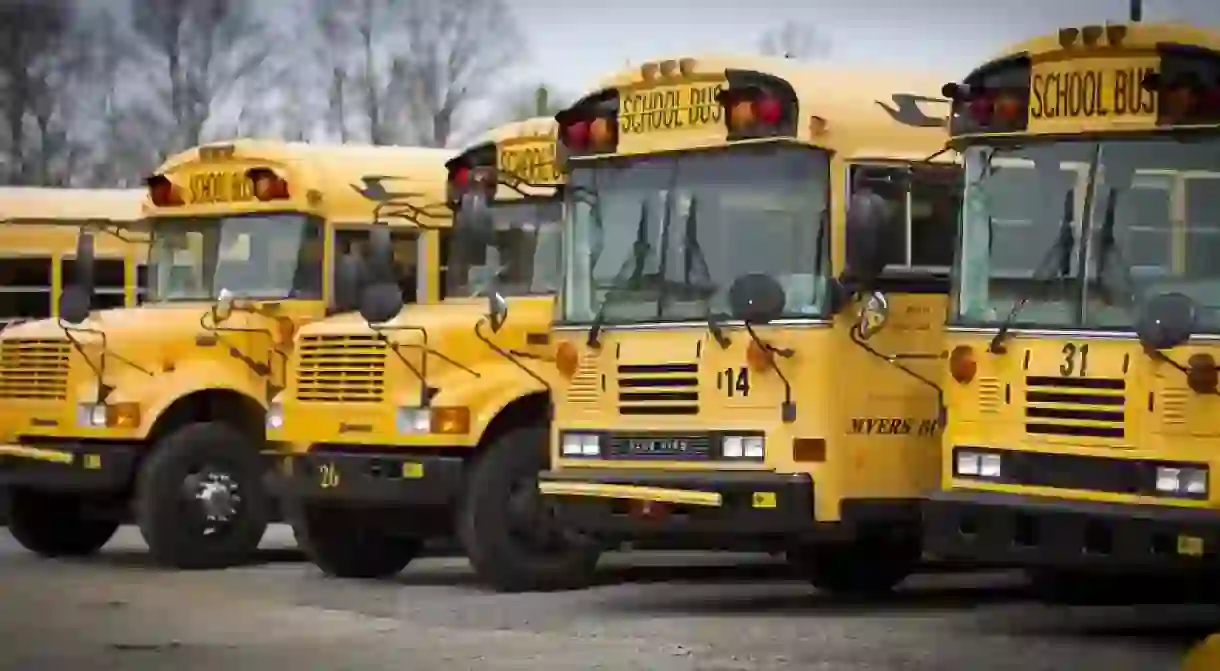Here’s Why School Buses Are Yellow and Don’t Have Seat Belts

If you live in the United States, you’ve no doubt seen a yellow school bus. Perhaps you’ve even retained fond memories of one shuttling you back and forth to school. This color and much of the school bus’ design was determined in 1939, thanks to a professor by the name of Dr. Frank W. Cyr, also known as the “Father of the Yellow School Bus.”
According to the LA Times, Cyr was a rural education specialist working out of Columbia University’s Teachers College in New York. After visiting several schools by using funds from a Rockefeller Foundation Grant, he called a meeting in April of 1939 at Teachers College. Attended by everyone from school officials to school bus manufacturers, the meeting produced a 42-page guide on how to construct a proper, safe school bus. This guide covered things such as size and seats, but also what color it ought to be. The color is a golden yellow with hints of orange, now known as National School Bus Glossy Yellow. It was chosen because human eyes are quick to notice the color, even in low light, and because black lettering shows up easily on a yellow background. Buses in the U.S. and Canada soon began shifting from whatever color they had been—which included all sorts of colors, including a patriotic mix of red, white, and blue—to the unified yellow. Minnesota was the last state to follow suit, changing from orange to yellow in 1974.

School buses lack seat belts because studies have shown that adding them wouldn’t make the buses any safer. As it stands, school buses are about as safe as ground transit gets. According to the National Highway Traffic Safety Administration (NHTSA), a student is 70 times safer commuting to school via a bus than a car, and only four to six fatalities occur on school buses annually. The reasons being that buses are heavier than cars; passengers sit higher up; the force of a crash is distributed differently.
Per NHTSA:
“NHTSA decided the best way to provide crash protection to passengers of large school buses is through a concept called ‘compartmentalization.’ This requires that the interior of large buses protect children without them needing to buckle up. Through compartmentalization, children are protected from crashes by strong, closely spaced seats that have energy-absorbing seat backs.”
Of note, smaller buses—specifically, those weighing less than 10,000 pounds—are required to have seat belts.
Cyr passed away on August 1, 1995, at the age of 95, according to his obituary. His son, William, once asked Cyr, “If you’re the father of the yellow school bus, what does that make me?” Cyr supposedly told his son that any time such a bus passed, he could say, “There goes one of my brothers.”














